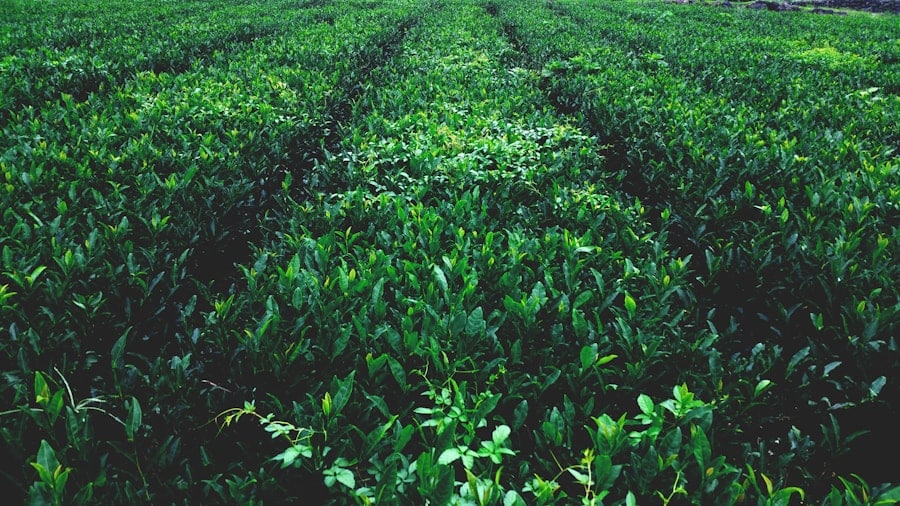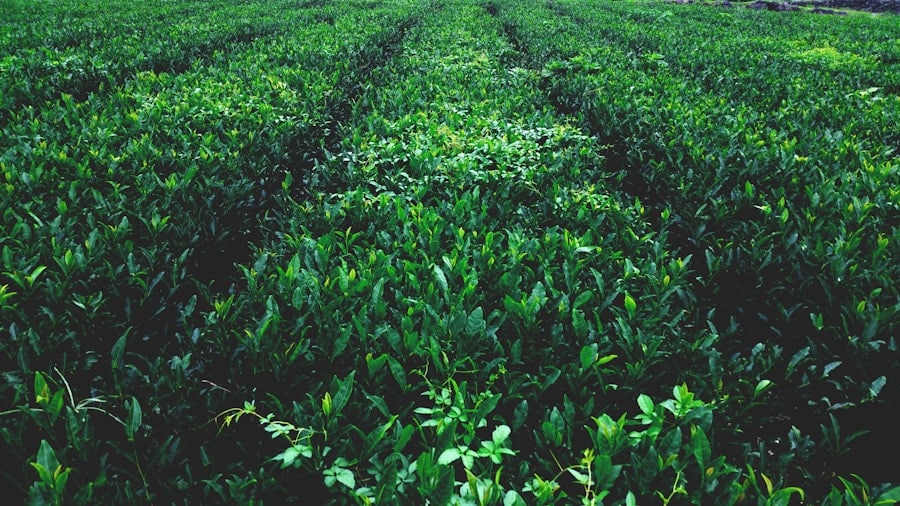The agricultural sector is undergoing a transformative shift, driven by the integration of advanced technologies such as artificial intelligence (AI). As the global population continues to rise, the demand for food production intensifies, necessitating innovative solutions to enhance crop yield and quality. One of the most pressing challenges faced by farmers is the prevalence of crop diseases, which can devastate harvests and threaten food security.
Traditional methods of disease detection and management often fall short, leading to significant economic losses and increased reliance on chemical treatments. In this context, AI emerges as a powerful tool that can revolutionize the way we predict and manage crop diseases. AI encompasses a range of technologies, including machine learning, computer vision, and data analytics, which can analyze vast amounts of data to identify patterns and make predictions.
By leveraging these capabilities, farmers can gain insights into potential disease outbreaks before they occur, allowing for timely interventions. The application of AI in agricultural crop disease prediction not only enhances the efficiency of disease management but also promotes sustainable farming practices. As we delve deeper into this topic, it becomes evident that AI is not merely a technological advancement; it represents a paradigm shift in how we approach agricultural challenges.
Key Takeaways
- AI has the potential to revolutionize agricultural crop disease prediction by providing accurate and timely insights for farmers.
- Current challenges in crop disease prediction include limited access to data, lack of expertise, and the complexity of disease identification.
- AI can improve crop disease prediction by analyzing large datasets, identifying patterns, and providing early detection of diseases.
- Advantages of using AI in agricultural crop disease prediction include increased accuracy, reduced reliance on human expertise, and potential cost savings for farmers.
- The potential impact of AI on crop disease management includes improved crop yields, reduced use of pesticides, and overall sustainability in agriculture.
Current Challenges in Crop Disease Prediction
Despite advancements in agricultural practices, predicting crop diseases remains fraught with challenges. One of the primary obstacles is the complexity of plant-pathogen interactions. Diseases can be caused by a myriad of factors, including fungi, bacteria, viruses, and environmental conditions.
Each pathogen exhibits unique behaviors and responses to various stimuli, making it difficult to develop a one-size-fits-all predictive model. Furthermore, the symptoms of crop diseases often overlap with those caused by abiotic stressors such as nutrient deficiencies or environmental stress, complicating diagnosis. Another significant challenge is the lack of comprehensive data on crop diseases.
While some regions may have extensive historical data on specific diseases, others may lack sufficient information to inform predictive models. This data scarcity can lead to inaccurate predictions and ineffective management strategies. Additionally, many farmers may not have access to the latest technologies or training necessary to utilize AI effectively.
This digital divide can exacerbate existing inequalities in agricultural productivity and limit the potential benefits of AI-driven solutions.
The Role of AI in Improving Crop Disease Prediction

AI plays a pivotal role in enhancing the accuracy and efficiency of crop disease prediction through various methodologies. Machine learning algorithms can analyze historical data on crop health, weather patterns, and soil conditions to identify correlations that may indicate an impending disease outbreak. For instance, researchers have developed models that utilize satellite imagery and remote sensing data to monitor crop health over large areas.
Moreover, AI-powered tools can integrate real-time data from multiple sources, including weather forecasts and soil moisture levels, to provide farmers with actionable insights. For example, a machine learning model might predict that a specific crop variety is at risk for a particular disease based on current weather conditions and historical susceptibility data.
This information allows farmers to take preemptive measures, such as adjusting irrigation practices or applying targeted treatments, thereby minimizing the impact of diseases on their crops.
Advantages of Using AI in Agricultural Crop Disease Prediction
The advantages of employing AI in agricultural crop disease prediction are manifold. One of the most significant benefits is the ability to process and analyze large datasets quickly and accurately. Traditional methods often rely on manual observations and limited data points, which can lead to delayed responses to disease threats.
In contrast, AI systems can continuously learn from new data inputs, improving their predictive capabilities over time. This adaptability ensures that farmers receive timely alerts about potential disease outbreaks, enabling them to act swiftly. Additionally, AI can enhance precision agriculture by enabling targeted interventions rather than blanket treatments.
For instance, instead of applying fungicides across an entire field, AI-driven insights can help farmers identify specific areas at risk for disease. This targeted approach not only reduces chemical usage but also minimizes environmental impact and promotes sustainable farming practices. Furthermore, by optimizing resource allocation based on predictive analytics, farmers can improve their overall productivity and profitability.
Potential Impact of AI on Crop Disease Management
The integration of AI into crop disease management has the potential to reshape agricultural practices fundamentally. By providing farmers with accurate predictions and tailored recommendations, AI can significantly reduce crop losses due to diseases. This proactive approach allows for better resource management, as farmers can allocate their time and inputs more effectively based on real-time data insights.
Moreover, the use of AI in disease prediction can foster collaboration among stakeholders in the agricultural sector. For instance, agronomists and researchers can share data and insights derived from AI models to develop more robust disease management strategies. This collaborative effort can lead to the establishment of best practices that benefit entire farming communities rather than individual farms alone.
As a result, the collective knowledge gained through AI-driven predictions can contribute to enhanced food security and resilience against climate change.
Ethical and Social Implications of AI in Agriculture

The Risk of Overlooking Traditional Farming Knowledge
One concern is the potential for increased reliance on technology at the expense of traditional farming knowledge and practices. As farmers become more dependent on AI-driven tools, there is a risk that valuable indigenous knowledge about local ecosystems and pest management may be overlooked or undervalued.
The Digital Divide and Access to Technology
Additionally, the digital divide poses significant ethical questions regarding access to technology. Smallholder farmers in developing regions may lack the resources or infrastructure necessary to adopt AI solutions effectively. This disparity could exacerbate existing inequalities within the agricultural sector, leading to a concentration of benefits among larger agribusinesses while marginalizing small-scale producers.
Promoting Inclusive Agricultural Development
Ensuring equitable access to AI technologies will be crucial in promoting inclusive agricultural development.
Future Developments and Trends in AI for Crop Disease Prediction
The future of AI in agricultural crop disease prediction is poised for exciting developments as technology continues to evolve. One emerging trend is the increasing use of deep learning algorithms that can analyze complex datasets with greater accuracy than traditional machine learning methods. These algorithms have shown promise in image recognition tasks, enabling more precise identification of plant diseases through visual symptoms captured by drones or smartphones.
Another trend is the integration of Internet of Things (IoT) devices with AI systems for real-time monitoring of crop health. Sensors placed throughout fields can collect data on soil moisture, temperature, and other environmental factors that influence disease development. When combined with AI analytics, this data can provide farmers with actionable insights that adapt to changing conditions on the ground.
As these technologies become more accessible and affordable, their adoption is likely to increase among farmers worldwide.
The Future of AI in Agricultural Crop Disease Prediction
As we look ahead, it is clear that AI will play an increasingly vital role in agricultural crop disease prediction and management. The ability to harness vast amounts of data for predictive analytics offers unprecedented opportunities for enhancing food security and sustainability in agriculture. However, it is essential to navigate the ethical considerations associated with this technological shift carefully.
By fostering collaboration among stakeholders and ensuring equitable access to AI tools, we can maximize the benefits while minimizing potential drawbacks. The future landscape of agriculture will likely be characterized by a harmonious blend of traditional knowledge and cutting-edge technology, paving the way for resilient farming systems capable of meeting the challenges posed by climate change and population growth. As we embrace this future, it is imperative that we remain vigilant about the social implications of our technological advancements to create an inclusive agricultural ecosystem that benefits all stakeholders involved.
In a recent article discussing the future of AI in agricultural crop disease prediction, researchers have highlighted the potential of using advanced technology to revolutionize farming practices. This aligns with the top trends on YouTube for 2023, where viewers are increasingly interested in innovative solutions for various industries. For those looking to delve deeper into the world of technology, the article also mentions the top 10 best astrology software for PC and Mac in 2023, providing a comprehensive guide for those seeking to explore new tools and applications. Additionally, for individuals seeking a versatile device for everyday use, the article recommends considering the best tablet to buy, offering insights into the latest models and features available on the market.

